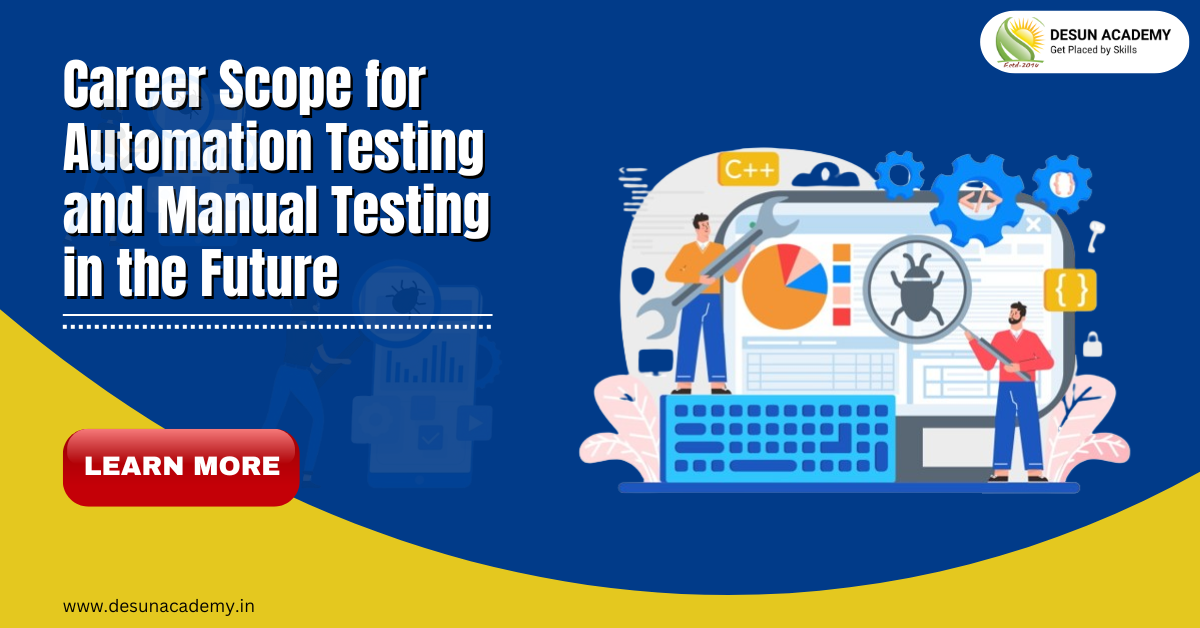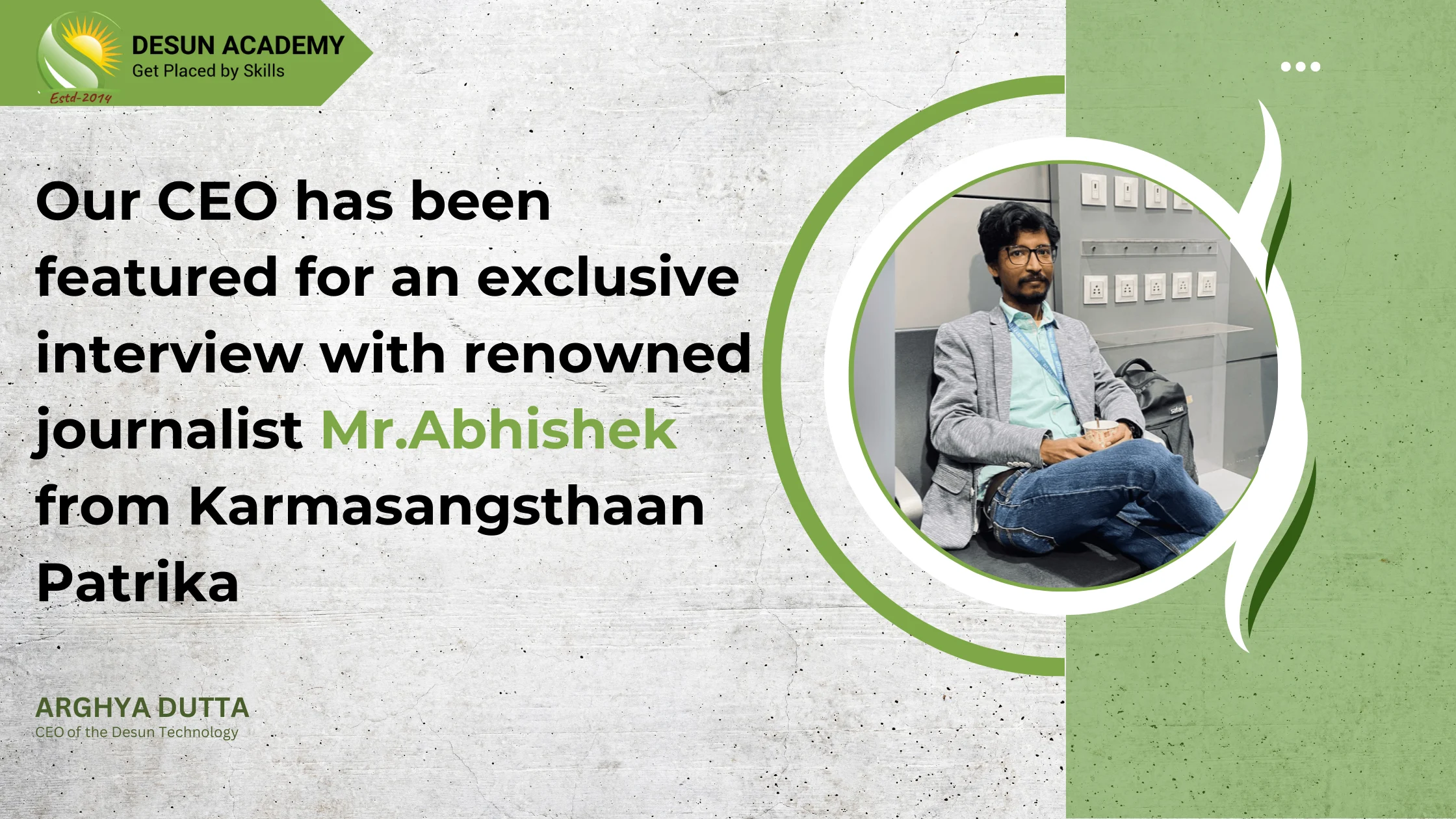
Automation Testing and Manual Testing
Career Scope for Automation Testing and Manual Testing in the Future
Do you want to know about the career scope for automation testing and manual testing in the future? If yes then this article is for you. However, in the dynamic landscape of software development, the roles of automation testing and manual testing play pivotal roles in ensuring the quality and reliability of software applications. As technology continues to evolve, the demand for skilled professionals in both automation testing and manual testing is on the rise. This article explores the career scope for automation testing and manual testing in the future, shedding light on the opportunities and challenges that lie ahead.
Unveiling the Future: Possibilities for Automation Testing
Since technology is developing so quickly, there is a greater need than ever to complete projects on time. The entire process of following a software life cycle needs to be sped in order to finish projects quickly. Automation can be used in software testing to reduce costs and time, but only in projects that require a lot of work. Automation testing is the best option when it comes to conducting large-scale regression testing. That can be a wise decision.
Test automation offers a number of crucial advantages, such as increased software quality, fewer manual software testing procedures and the removal of pointless testing activities, more systematic repeatable software tests, less repetitive work more consistent testing outcomes, and increased consistency.
In a very short amount of time, run more software tests and get better testing coverage. increases output, among other benefits. It is a useful way to reduce or eliminate manual labor during the execution of functional test cases and regression. Plus, since errors won’t happen after the script is well-developed, the likelihood of a flaw escaping will be much reduced. In light of quality and schedule constraints, automation will likely be viewed as more cost-effective in the near future.
However, Let’s delve into the key trends that are poised to define the future of automated testing.
-
AI-Driven Testing Solutions:
Artificial Intelligence (AI) is set to be a game-changer in automated testing. AI-driven testing solutions leverage machine learning algorithms to enhance the testing process. These intelligent systems can autonomously learn from previous test scenarios, adapt to changes in the software, and pinpoint complex issues that might elude traditional testing methods.
-
Machine Learning Integration:
Machine learning is not just a buzzword; it’s becoming an integral part of automated testing. By analyzing large datasets, machine learning algorithms can identify patterns, predict potential issues, and proactively optimize test cases. This integration ensures a more adaptive and efficient testing framework, reducing the likelihood of overlooking critical defects.
-
DevOps and Automated Testing Synergy:>
The collaboration between automated testing and DevOps practices is set to deepen. As organizations embrace DevOps for continuous integration and delivery, automated testing becomes a crucial component in the development pipeline. Automated tests provide rapid feedback, enabling early detection and resolution of issues, aligning seamlessly with the DevOps philosophy.
-
Enhanced Cross-Browser and Cross-Platform Testing:
The diversity of devices and platforms demands comprehensive testing strategies. Future automated testing tools will excel in executing tests across various browsers and platforms, ensuring consistent functionality and user experience. This versatility is critical in a digital landscape where users interact with applications on diverse devices.
-
IoT Testing for a Connected World:
The rise of the Internet of Things (IoT) introduces new challenges for testing. Automated testing will play a pivotal role in ensuring the reliability and security of interconnected devices. From smart homes to industrial IoT applications, robust automated testing frameworks will be essential to identify and address potential issues in this expansive ecosystem.
-
Quantum Computing Acceleration:
Looking further into the future, the advent of quantum computing holds promise for unprecedented testing speeds. Quantum computing’s ability to process complex algorithms at unparalleled speeds will revolutionize automated testing, allowing for more extensive test coverage in significantly reduced time frames.
The future of automation testing is undeniably exciting, marked by the integration of AI, machine learning, and cutting-edge technologies. Embracing these advancements will not only streamline testing processes but also elevate the overall quality of software. Stay ahead of the curve by incorporating these futuristic trends into your automation testing strategies.
Navigating the Horizon: Future Possibilities for Manual Testing
By carefully examining each step of the requirement specification analysis record, manual testing is regarded as the initial testing stage that assesses how the built application behaves. Assuring that the application functions flawlessly, free of any bugs or functional faults, and in accordance with the requirement specification papers is the main goal of manual testing.
In terms of functionality and criteria, manual testing is going to resemble software development more and more in the future. The evolution and practical advancements in manual testing demonstrate the need for manual testers to advance their abilities and methods of operation. Testers who remain focused solely on manual testing procedures should upgrade their knowledge of new technologies and automation testing frameworks. This includes leadership abilities, logical reasoning, process analysis, and development/special testing tools. What the testers are required to do is what may be on your mind right now:
-
To improve their knowledge and gain a deeper understanding of the fundamental concepts of programming and the development process.
-
Aware of the operation of the code.
-
To increase ROI, find out more about the business’s operations.
-
Ability to engage in managerial tasks.
However, let’s explore the major themes that will shape manual testing in the years to come.
-
-
Adaptive Testing Methodologies
The future of manual testing is poised to witness a paradigm shift towards adaptive testing methodologies. Traditional testing approaches may give way to more flexible and responsive strategies that cater to the dynamic nature of modern applications. Testers will be empowered to adjust their testing processes on the fly, ensuring comprehensive coverage in the face of evolving requirements.
-
Human-Centric Exploratory Testing
While automation takes center stage, the human touch in testing remains irreplaceable. Future possibilities for manual testing include a resurgence of exploratory testing, where skilled testers rely on their intuition and experience to uncover intricate bugs that automated tools might miss. This human-centric approach adds a layer of depth to testing, especially in scenarios where creativity and intuition are paramount.
-
User-Centric Performance Testing
In the future, manual testing will extend beyond functionality and delve deeper into user-centric performance testing. Testers will focus not only on the technical aspects of an application but also on its usability and user experience. This shift reflects the growing emphasis on delivering applications that not only work flawlessly but also provide a seamless and enjoyable experience for end-users.
-
Collaborative Testing in DevOps Culture
As organizations increasingly embrace DevOps practices, the role of manual testing will integrate seamlessly into collaborative testing environments. Testers will work in tandem with developers, bridging the gap between the development and testing phases. This collaborative approach ensures that testing is not a bottleneck but an integral part of the continuous delivery pipeline.
-
Continuous Learning and Skill Enhancement
In the future, manual testers will find themselves in a perpetual state of learning and skill enhancement. The dynamic nature of technology demands that testers stay abreast of the latest tools, methodologies, and industry trends. Continuous learning becomes a cornerstone for manual testers to remain effective and adaptable in an ever-changing testing landscape.
-
Integration of AI-Augmented Testing
While manual testing retains its human touch, the future envisions a harmonious integration of artificial intelligence (AI) to enhance testing efficiency. AI algorithms may assist manual testers in analyzing vast datasets, identifying patterns, and providing insights that contribute to more informed testing decisions. This synergy between human expertise and AI augmentation will redefine the manual testing landscape.
-
The future possibilities for manual testing are dynamic and promising, with a focus on adaptive methodologies, human-centric approaches, and seamless integration into the DevOps culture. As technology evolves, manual testing stands resilient, evolving to meet the challenges and demands of modern software development. Embrace the future of manual testing, where the expertise of skilled testers remains at the forefront of ensuring software quality.
Conclusion:
The future of both automation testing and manual testing is promising, with each approach complementing the strengths of the other. While automation testing is indispensable for efficiency and speed, manual testing remains crucial for aspects that require human judgment and creativity. Professionals who possess a balanced skill set in both automation and manual testing, coupled with expertise in emerging technologies, will find themselves well-positioned for a rewarding career in the evolving landscape of software testing. As organizations strive for faster and more reliable software delivery, the demand for skilled testing professionals is set to grow, making it an exciting time for those considering a career in this field.
However, to know more click here.
-








